The Irish Terrier is the fastest in the terrier group. Distinctive characteristics: harmonious constitution, coarse coat of all shades of red, modest beard.
The Irish Terrier is a dog, like gloves, changing mood and style of behavior, but incredibly stable in its own love for the owner. Temperamental, starting from a half-turn, this saffron milk cap is a real genius of reincarnation, easily mastering the main canine professions. Whatever important mission he was assigned, the “Irishman” will definitely try to overfulfill the plan to earn the coveted praise. At the same time, the Irish Terrier is far from being a simpleton, and sometimes a completely unpredictable intriguer, capable of the most unexpected attacks. And yet, to curb and direct the animal’s energy in the right direction is a quite feasible task, especially if you have already dealt with terriers and are aware of their breed “tricks”.
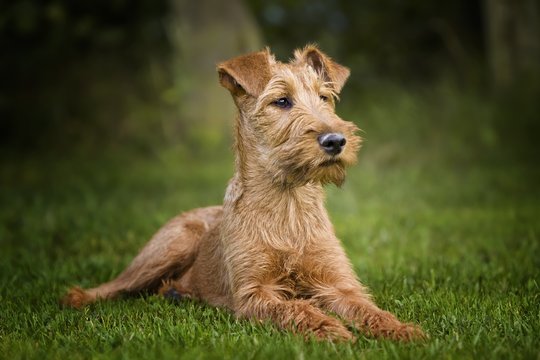
Ireland has given a start in life to four varieties of terriers, each of which has a unique exterior and is not at all like their English relatives. As for the Irish Terrier itself, there are almost no written sources that can shed light on the origins of the breed. Yes, theoretically, the “Irish” remain the most ancient pets that appeared in the “land of shamrocks and leprechauns” almost at the dawn of our era. However, vague extracts from ancient manuscripts, which are often too subjectively judgmental to be taken for documentary descriptions, serve as evidence of this statement.
The breed began to really develop from the second half of the 19th century. So, in 1875, its representatives appeared at an exhibition in Glasgow, and a year later – at a similar event in Brighton, England. In 1879, the animals got their own club headquartered in Dublin, which added points in the eyes of breeders. At the same time, it is important to understand that the dogs of those years were inferior to today’s individuals in terms of external indicators. For example, the necks of the first “Irish” were more massive, the muzzles were voluminous, and the bodies were not so athletic. In addition, at first, the animals were cut off not only by their tails but also by their ears.
At the end of the 19th century, Irish Terriers received recognition from the English Kennel Club, which made them equal in rights with other breeds. However, the real finest hour awaited the natives of the Emerald Isle on the fronts of the First World War, where they were used as messengers. In the confusion reigning in the fields, confusing even the calmest dogs, the Irish Terriers never lost their temper and were ideally suited for the role of mine seekers and paramedics.
After the war, the popularity of terriers began to decline, and by the beginning of the 30s, it became almost impossible to find a reference “Irishman” at exhibitions. The breeding bases of European nurseries – the main suppliers of purebred producers – have also been reduced to a minimum. Concerned about the impending degradation of the breed, dog handlers and amateurs tried to return to her philistine interest. So, in 1933, the merchant Gordon Selfridge even organized an exhibition of Irish terriers in the pavilions of his own department store.
Irish Terriers came to Russia after the Great Patriotic War. In particular, the first representative of this family was brought to the USSR in the late 1940s. It was not easy to find a suitable male for the red “emigrant”, so at first the female was mated with Kerry Blue and Welsh Fox Terriers. But already in the 50s, the problem of breeding the breed in Russian realities was solved by a Polish nursery. It was he who transferred to the union a pair of “Irish” males, which were later joined by individuals from the GDR. For several decades, the blood of the domestic livestock was systematically refreshed, but Irish Terriers of the “Soviet spill” were still not quoted at international exhibitions. Only after British producers were imported into the country in 1997, the breed acquired a more sophisticated look, having received admission to European rings.
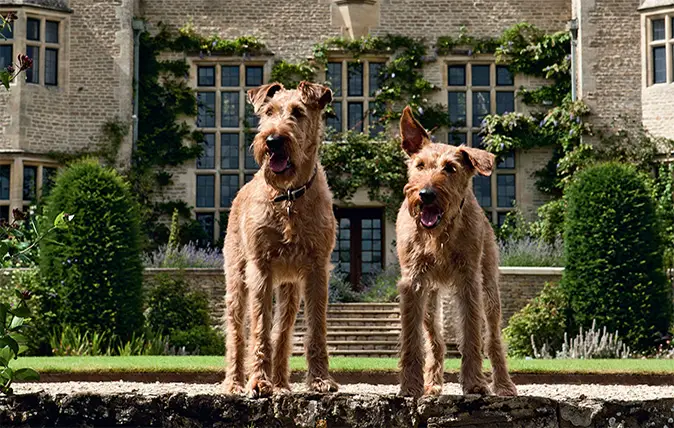
Irish Terriers have the appearance of classic athletes: a dense muscular body, strong, moderately long legs, and a strong back. They, of course, do not fashion pets, but rather natural-born hard workers, in which every muscle is sharpened for the only action – a rapid run. Another distinctive feature of the Irish Terrier breed is a unique coat that functions as a tracksuit and chain mail at the same time. It is the tough dog that protects the dog’s body from scratches and minor injuries during the hunt, and also has dirt and water-repellent functions. The Irish Terrier is a medium-sized breed, the height at the withers of adult dogs is 45-48 cm, the average weight is 11-13 kg.
The flat, long skull of the Irish Terrier tapers smoothly towards the muzzle. The stop is weak, visible only when viewed in profile. Cheekbones without obvious relief.
Strong, sturdy jaws provide a good grip. The teeth of the Irish Terrier are white and healthy. Desired bite shape: the upper incisors slightly overlap the lower ones.
The nose is medium in size and always black.
The Irish Terrier has small and very dark eyes. The look of the dog is lively, quick-witted. Extremely discouraged: clarified or yellowish iris colors.
The dog’s miniature triangular ears look forward and hang down, close to the cheekbones. The ear sheet is of moderate thickness, the fold of the cartilage is located above the forehead line.
The Irish Terrier’s neck is distinguished by good length and a high, proud set. The representatives of this breed do not have a traditional suspension, but on the sides of the neck, there are small folds-ruffles of wool, reaching the lower line of the skull.
Dogs of this breed have a harmonious body: not short, but not overly stretched either. The back is very strong, with a well-muscled, flat loin. The Irishman’s chest gives the impression of being strong and deep, but its width and volume are small.
The legs of Irish Terriers look slender and elegant, but at the same time devoid of excessive fragility. The shoulders of the animal are elongated, set at the correct slope. The forearms are bony, moderately elongated, and straight; the pasterns are inconspicuous, short, and straight. The hind legs of the dog are massive and solid. The thighs are strong and fleshy. The knees are very moderately angulated and the hock is lowered. The paws of the representatives of this breed are relatively small, but strong. The shape of the paw is rather rounded, with curved toes ending in strong black claws.
The undocked tail of the Irish Terrier is strong and of good length. In purebred individuals, the tail is set high, noticeably raised (not higher than the backline), and does not form a sharp bend. Despite the ban on cropping by European cynological associations, individual adherents of traditions continue to shorten this part of the body for their wards. According to the unspoken law, the tail is docked by no more than ⅓.
The coarse coat of the Irish Terrier lies flat, does not bristle, but has a characteristic break. The hair grows thickly, therefore, even by pushing it apart with your hands, it is not always possible to see the dog’s skin. According to the standard, the coat should not belong or be pronounced curly and hide the outline of the silhouette of the animal. The hair on the terrier’s head is much shorter than on the rest of the body. There is a small beard on the face.
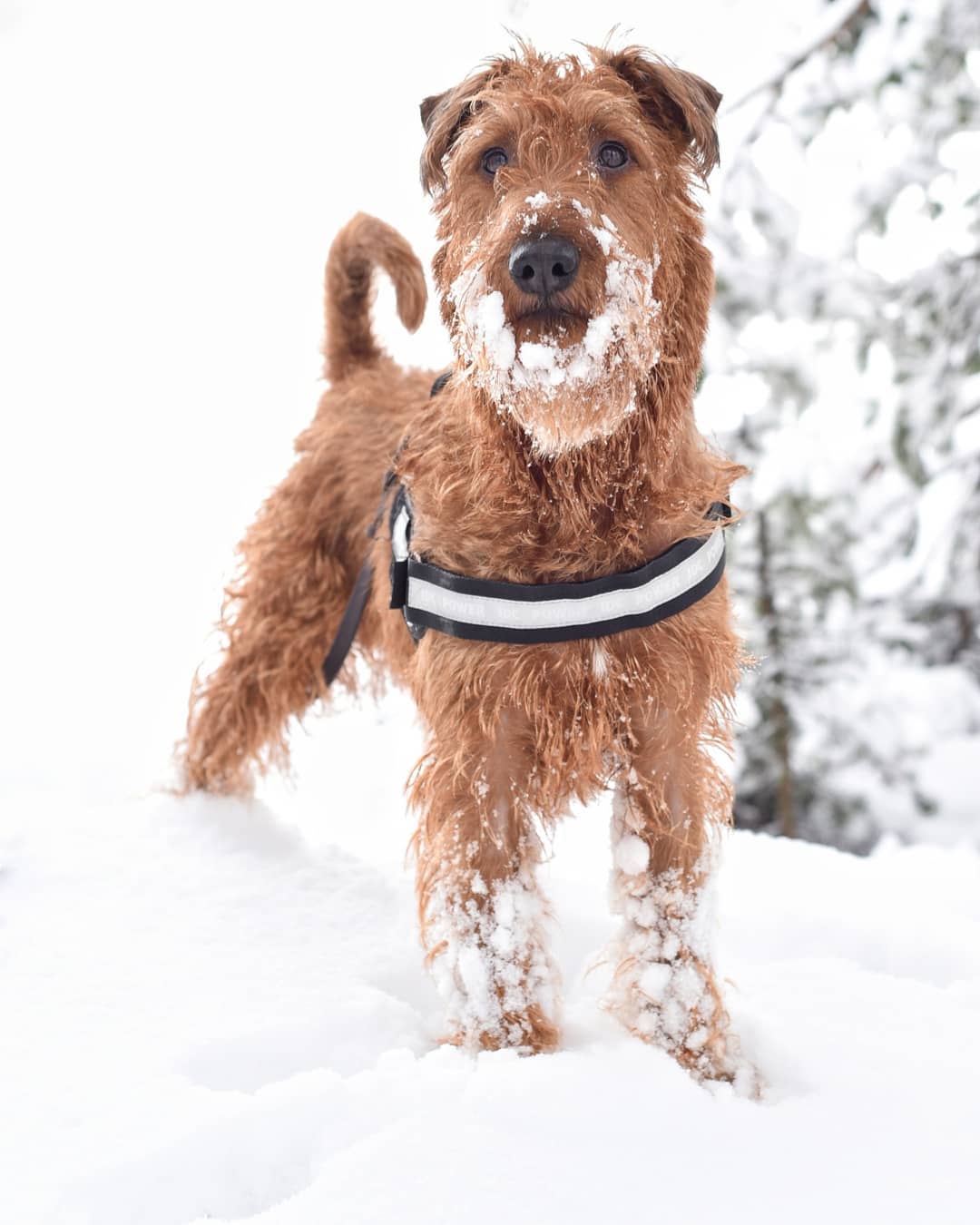
The traditional colors of the breed are red, reddish-golden, wheat-red. Small white fur markings on the chest are not considered a serious fault.
Disqualifying breed faults
- Bite defects: strong undershot or, conversely, overshot.
- Light (depigmented) nose.
- Any coat color other than those approved by the standard.
- Paw pads covered with callous growths or cracked skin.
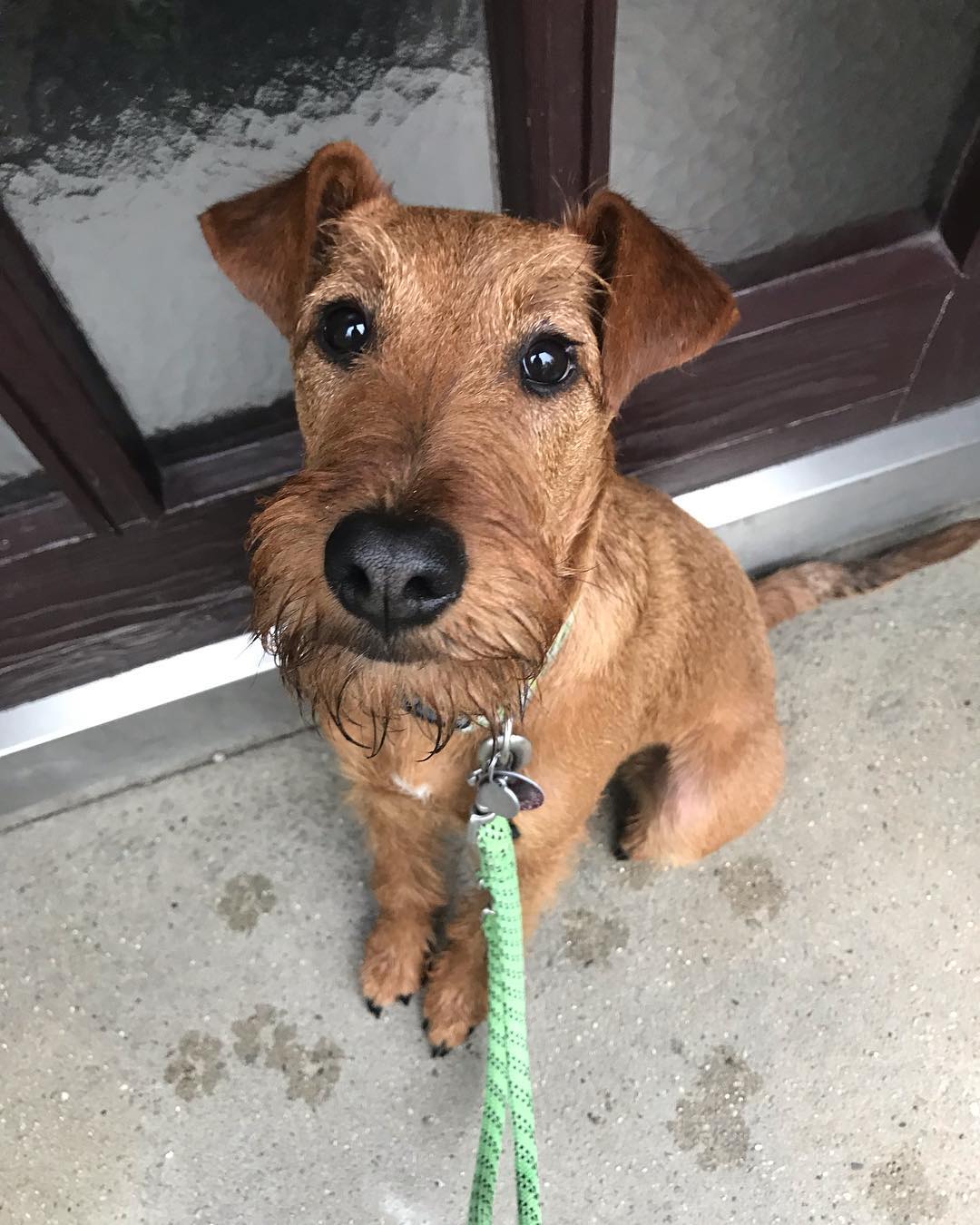
As a true native of the “land of leprechauns and red-haired bullies”, the Irish Terrier is quick-tempered, energetic, and inexhaustible for all kinds of inventions. Fans of the breed claim that at least three canine personalities coexist in their representatives, each of which is the complete opposite of the others. In particular, in terms of work, Irish Terriers are unparalleled hard workers, firsthand familiar with concepts such as responsibility and diligence. Guarding the house or searching for psychotropic substances, baiting a badger, or cutting circles around the cinema – the Irish Terrier takes on all of the above with primordial zeal and absolutely the same fuse.
But once the job is done, the dog’s behavior changes dramatically. An attentive worker and a hunter immediately gives way to a mischievous clown and an actor, whose “numbers” sometimes cause laughter, and sometimes the desire to thoroughly pour the restless prankster. So, for example, Irish Terriers are not only unsurpassed runners, but also incredible jumpers, so quietly pulling a cookie or sausage off the table for the breed is not just a problem, but a primitive trick. All sorts of hecks and hooks for the “Irish” – funny puzzles that need to be dealt with as soon as possible. The result of such a quest is usually the same: doors wide open and a pet hiding in an unknown direction.
In their free time from work and play, red-haired rascals prefer to mimic the environment, so if you did not notice an Irish Terrier in the room, this does not mean that he is not there. Most likely, he successfully merged with the interior and lies imposingly in his corner. The Irish Terrier is a self-sufficient and proud breed, so don’t expect your pet to need your approval before doing anything. On the other hand, these energetic athletes are strongly attached to the person they consider to be their master. Moreover, they are ready to fully adapt to the owner’s lifestyle, even if he does not always meet their natural inclinations. Do you like road trips? Your “Irishman” will willingly fall apart in the front seat and will enthusiastically stick his muzzle into the side window, catching the wind with his mouth. Looking for a healthier vacation? The clever redhead will not refuse to run for a bike.
The Irish Terrier is forgiving of children, provided that he lived and raised with them from puppyhood. No, he is not a trouble-free supernatural, but quite a good animator who knows how to support a game or a secret excursion outside the apartment. In addition, he can endure not the most careful treatment on the part of the baby, for example, tugging by the tailor an accidentally pressed paw. True, the dog will restrain the negative only if it is a one-time “bonus”, and not systematic bullying. But, unfortunately, the “Irish” doesn’t work well with other four-paws. Cats for them – target number 1, subject to immediate destruction; dogs are potential rivals that need to be put in place as often as possible. So finding a pleasant companion for the Irish Terrier among fellow tribesmen is still a challenge.
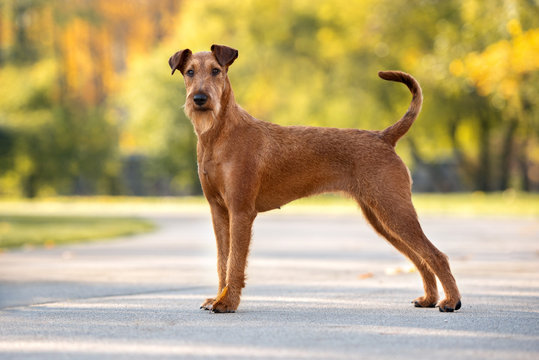
The learning ability of the Irish Terrier is, if not phenomenal, then very impressive. The only problem is to awaken the desire of the animal to practice. Experienced dog handlers advise relying on the breed’s natural curiosity and interest in new activities. For the company with its beloved owner, the dog will move mountains, especially if the owner was not too lazy to diversify the educational process with game moments. On the other hand, it is better not to slip into frank familiarity with representatives of this family. Irish Terriers know what leadership is and are very eager for it. If the “Irishman” is the only pet in the house, then in the absence of more suitable competitors at his side, he will willingly compete for spheres of influence with his own master.
It will be necessary to select a training program for the Irish Terrier depending on the type of activity carried out by the animal. For example, the course for search and rescue dogs is very different from the complex of activities that are attended by sentries. As for sports training, you can learn coursing, agility, dog-frisbee, and skijoring with Irish terriers. On the hunt, today “Irish” is not often met, but this is more likely due to the unpopularity of the breed as a whole than because of the lost pursuing skills. If it is necessary to train a dog to work on a blood trail, fishing a downed bird from a reservoir and its subsequent retrieval is a quite feasible task.
It is better not to delay the training and education of the dog, because, in the first months of life, Irish Terrier puppies are more pliable, more obedient, and the owner is still an indisputable authority for them. So grow up your ward a little and start learning the basics of OKD. By the way, training in the classic form will not suit the “Irish”. To carry out a command only because a person requires it, animals consider it beneath their own dignity. Usually, breeders recommend talking with pets more, explaining to them the appropriateness of a particular requirement. It is also not forbidden to go with the Irish Terrier to the training grounds, but one cannot count on outstanding success from the training. Red-haired sly ones quickly figure out what’s what, and begin to evade the “obligation” in every possible way. Please note that this breed strives to work fully, and not pretend, so any group classes are perceived as a performance that no one needs.
It is believed that Irish Terriers do a good job with ZKS, but here it is important to soberly assess the situation. Due to the rather modest dimensions, a full-fledged security guard will not come out of the dog. However, if your goal is to scare away petty bullies, why not give it a try. The main thing is that the pet responds quickly and correctly to the call. Do not forget that the Irish Terrier is a gambling dog, often getting into a rage and ignoring any external stimuli. It is optimal if it is possible to delegate the training of an animal to a professional who will develop an individual ZKS program for him. The fact is that the standard standards approved for service breeds will not suit the “Irish” – the build is not the same.
You should be extremely careful about the punishment of your pet. Of course, in the upbringing of any animal, one gingerbread method is indispensable, but in the case of Irish Terriers, sometimes it is better to turn a blind eye to a harmful trick than to cause negative emotions in the dog. Moreover, the breed has an excellent memory, and the “Irishman” fixes all the injustices in the mind for a long time. Accordingly, no matter how thoroughly and efficiently you work with a dog, you will not be able to train an exemplary campaigner out of it who automatically executes any command. After all, Irish Terriers weren’t bred for that. It is better to give the ward more freedom, and he will certainly answer you with respect and diligence.
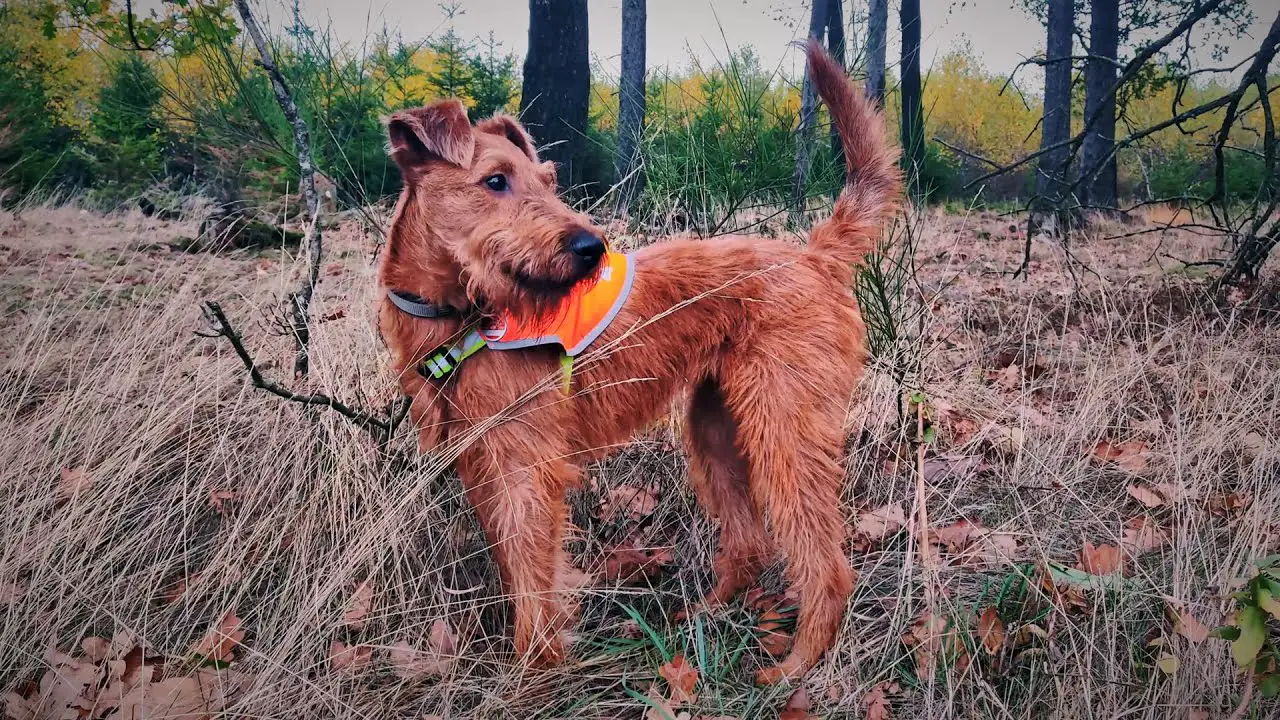
Irish Terriers are not bought to be chained and housed in a booth. Of course, the breed did not become completely decorative, but its working status has long been transformed into a sports-companion one. If we are talking about the ideal housing for dogs, then for the “Irish” – these are country cottages with a spacious fenced area. Moreover, it is better to set the fence higher – in a jump, terriers can overcome the bar of 1.5 meters. The dog gets used to a typical apartment if the owner does not restrict the pet from walking and is not lazy to fully train with him in the park.
So that the Irish Terrier does not look neglected and disheveled and does not lose breed features, it is supposed to be trimmed. Aerobatics is definitely a hand pinch. However, for beginners, such a technique is beyond reality, since even an experienced “pincher” can take 5 or more hours to process one dog. Therefore, if you have already decided to save on professional grooming, then at least stock up on a set of trimming knives, with which the procedure will be faster and easier. It is clear that in the absence of practice, the result of the first trimming is unlikely to be impressive, but the breed in the Irish Terrier should be guessed. In particular, trimming schemes that clearly demonstrate options for pinching on specific parts of the body will be a good help to a self-taught groomer.
Tools you need to pluck an Irish Terrier:
- stripping;
- slicker brush;
- trimming knife;
- thinning scissors;
- hair clipper.
The first trimming is carried out at 2.5-3 months: the procedure helps to rid the puppy dog of unnecessary plumpness and softness. The mustache and goatee are usually left untouched, as are the legs, but to give these areas a neat look, the fur on them is slightly trimmed with scissors. The hairs in the ear canal are also plucked out to ensure air circulation inside. As for the frequency of the procedure, show Irish terriers are pinched once every 1.5-2 months, and on the eve of the event, they simply bring what has been started to perfection. Pets can be trimmed once every six months, in the intervals between tweaks, limited to the standard brushing of the dog’s head.
Important: the pinching is carried out only on clean, pre-combed, and disassembled hair from tangles.
Regular baths are not necessary for the Irish Terrier in principle, especially since in the summer representatives of this breed willingly splash in open reservoirs. If the dog is seriously dirty, you will have to arrange a bath day. Just use the correct shampoo for wire-haired breeds and keep your pet outside until it is completely dry.
Caring for the eyes and ears of a dog follows the classic scenario: systematic cleaning with a soft cloth moistened with herbal tea or cleaning lotion. You will have to tinker with the puppy’s ears additionally: to form the correct set, the ear sheet is fixed with a plaster (glue) on a cardboard or plastic frame.
Your Irish Terrier’s teeth should be sparkling white, so brush over them once a week with a toothbrush or silicone brush and let your dog chew on hard treats. The “Irish” claws are cut only when the need arises. For example, if a dog runs a lot down the street and is actively exercising, the keratinized layer will have to be trimmed about once a month and a half, or even less often.
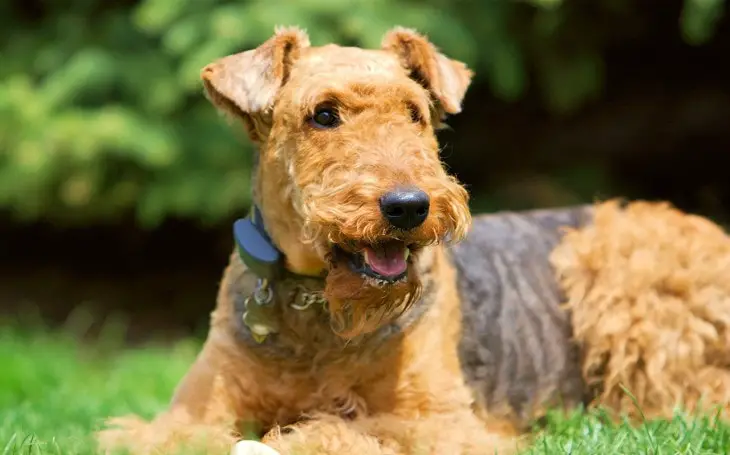
The Irish Terrier’s diet is traditional: meat and offal, seasoned with cereals, stewed or fresh vegetables, fruits, and herbs.
Additional sources of protein for dogs are dairy products and boneless sea fish. Along the way with food “Irish” is useful to give vitamin supplements. Particular preference is given to calcium supplements and complexes with chondroitin and glucosamine during the period when the puppy is growing rapidly. Dry industrial feed is also a good option if it is a variety for medium-sized breeds of at least premium class.
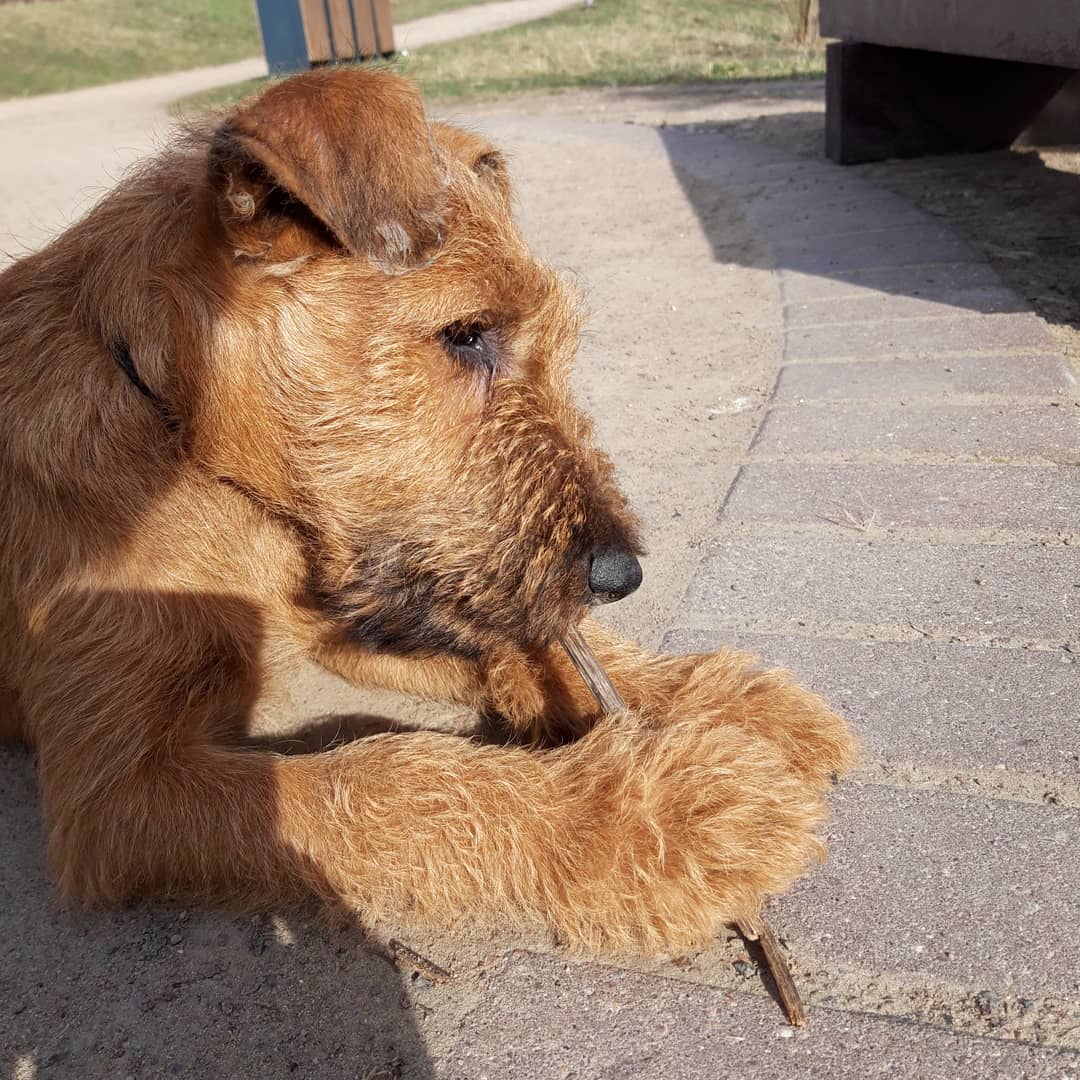
The Irish Terrier is a relatively healthy breed, and the “tail” of incurable genetic diseases does not follow. However, dogs can suffer from hip dysplasia, hypothyroidism, and von Willebrand-Diane disease. An unpleasant pain caused by heredity is hyperkeratosis of the pads of the paws. For some time, the breed ailment did not manifest itself, which gave the breeders hope for its complete disappearance. However, in recent years, individuals with pads, “decorated” with calloused and spiny growths, have been increasingly born. By the way, the disease is inherited in an autosomal recessive way, which requires the presence of the hyperkeratosis gene in both parents.
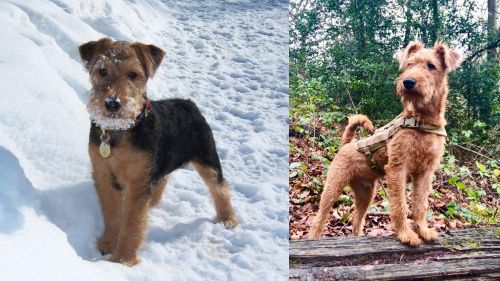
How to choose a puppy?
The main problem when choosing an Irish Terrier puppy is the shortage of registered kennels, so sometimes you almost have to queue up for babies.
- Irish Terrier puppies are handed out at 2-2.5 months, but it is better to get to know them early, for example, at 4 weeks of age.
- Rate the female s reaction to your arrival. If the dog tries to gather the cubs into a heap and cover with the body, this is normal. Explicit cowardice, aggression towards a stranger is an alarming signal.
- The exhibition potential of Irish Terrier puppies reveals itself at about the fifth month of life, so if you plan to get a show-class animal, wait a little longer with the purchase.
- When a stranger appears, puppies should not run away as fast as they can. This suggests that the animals are brought up in isolation and do not come into contact with anyone other than the owner of the nursery.
- The correct Irish Terrier puppy is sociable and responsive to affection. He willingly goes into his hands, substitutes his belly for scratching, allows himself to be felt.

